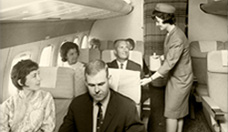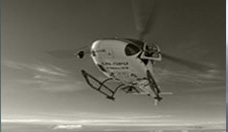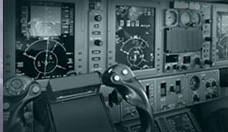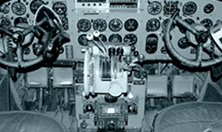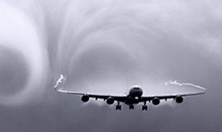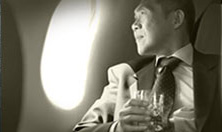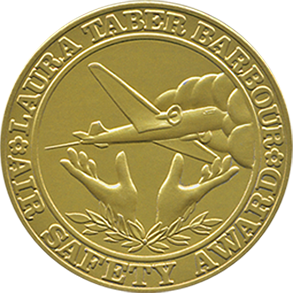Past Recipients
1956 |
|||
 |
 |
 |
 |
|
I. Irving Pinkel NACA |
Dugald O. Black NACA |
G. Merrit Preston NACA |
Gerald R. Pesman NACA |
| For a study of the propagation of fires following air crashes which resulted in the development of a crash fire suppression system. | |||
1957 |
|

|
Harry F. Guggenhiem Beginning in the 1920's and 1930's, initiation and promotion of aviation safety through competition, development of instrument flying, weather reporting and safety centers at Cornell and Harvard. |
1958 |
|

|
James Martin OBE-UK Design and development of low altitude ejection seats of exceptional performance. |
1959 |
|

|
Allen F. Morse FAA For project leadership with the then CAA, including flashing navigation lights, bird proof windshields, crash resistant fuel tanks and improved cockpit vision. |
1960 |
|

|
Melvin N. Gough NASA Langley Research Center Early formulation of philosophy and techniques for safe advanced flight research experiments as a chief test pilot at NACA and later at NASA and CAB. |
1961 |
|||

|

|
||
|
E.S. Calvert RAE |
J.W. Sparke RAE |
||
| Joint development of the Line-and-Bar Approach Lighting System and the Visual Glide Path Indicator. | |||
1962 |
|

|
Otto E. Kirchner, Sr. The Boeing Company Responsible for the development of high intensity navigation lights, passenger evacuation slides and accident report analysis. |
1963 |
|

|
David D. Thomas FAA For his depth of understanding of air traffic coupled with his inspirational leadership of air traffic controllers. |
1964 |
|

|
Philip Donely NASA Langley Research Center For astute analysis, leadership and initiative particularly in areas of aircraft loads, operating problems and airworthiness requirements. |

|
Jerome Lederer FSF, Honorary Recipient For prolific efforts applied with sedulity, indefatigability, and nicety of wit in the cause of air safety worldwide . |
1965 |
|

|
Auther E. Jenks FAA Techniques to monitor operation and accuracy of air navigational systems and improvements in terminal landing aids. |

|
Gloria W. Heath FSF, Honorary Recipient For manifold contributions to aviation safety involving liaison to further international cooperation in air safety, leadership in focusing attention in special problem areas, notably distress alerting and location. |
1966 |
|

|
Francis McCourt U.S. Army Aviation Materiel Laboratories Comprehensive program of full-scale dynamic crash and fire prevention experiments with rotary wing aircraft and leadership in establishment of the U.S. Army's crash survival investigator's school. |
1967 |
|||

|

|

|
|
|
W. M. Kauffman NCAA Ames Research Center |
William F. Milliken, Jr. |
W.O. Breuhaus Cornell Aeronautical Laboratory, Inc. |
|
| For early concepts of the variable stability airplane and the application of those concepts to inflight simulation. | |||
1968 |
|

|
Walter Tye UK ARB Development and application of national and international airworthiness standards; new technical approaches including work on Concorde requirements, safety provisions for automatic landings, standards for hovercraft and research needs. |
1969 |
|

|
Theodore G. Linnert ALPA For efforts insuring adequate runway lengths and a secondary landing gear warning system and for the championing of fire prevention and collision avoidance systems. |
1970 |
|

|
Joseph J. O'Connell, Jr. and Staff Bureau of Aviation Safety, NTSB Respected and emulated internationally expert and independent accident investigation and accident prevention. |
1971 |
|
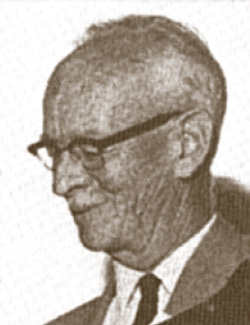
|
Malcomn Kuhring National Research Council, Canada Leadership, enthusiasm and drive, leading to reduction in aircraft accidents due to bird strikes. |
1972 |
|
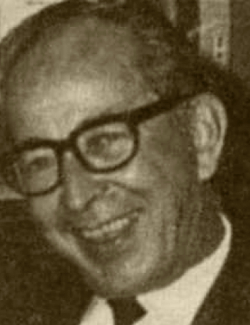
|
Dr. John A. Swearingen FAA Civil Aeronautical Research Institute Original research in human tolerance to vertical acceleration at great personal physical sacrifice; research on traumatic effects of explosive decompression, air blast forces, webbing restraints and human-based tolerance to crash impact. |
1973 |
|

|
Captain Homer Mouden Braniff and ALPA For unstinting dedication to air safety. Areas of particular focus include pilot's new plane safety evaluation, coordination of efforts concerning use of flight recorders, improved service testing and increasing of wet runway landing distance. |
1974 |
|

|
Dr. Ross McFarland Harvard University Guggenheim Center For over forty-five years of leadership dedicated to the identification and solution of important aerospace problems involving human factors while educating and inspiring over two hundred leaders in this field from many nations. |
1975 |
|

|
Fred Earnest Weick, ret. Piper Aircraft Corp. For improvement to propellers, foils and flaps, development of tricycle landing gear and low drag cowls, design of non-spinning airplanes, low wing agricultural airplanes and the Piper Cherokee series. |
1976 |
|

|
George Wansbeek KLM Extension of air safety information exchange and improvement of emergency training programs for flight deck and cabin crews. |
1977 |
|

|
James E. Dougherty FAA As a leader in the development and administration of U.S. safety standards for materials, structures and detail design of civil aircraft and for leadership in related areas of maintenance, structural fatigue and composite materials. |
1978 |
|

|
Capt. B. Victor Hewes ALPA For contributions in originating international standards for effective aircraft fire fighting procedures, equipment and rescue and efforts to increase safety in the design and operation of transport aircraft. |
1979 |
|

|
Capt. Paul A. Soderlind Northwest Airlines For many contributions to aviation safety through equipment design technology, flight techniques and training procedures over thirty-seven years of a multifaceted career. |
1980 |
|

|
Delfina R. Mott Association of Flight Attendants For advancing cabin safety measures, for emphasizing human factors following accidents and for her articulate advocacy of flight safety. |
1981 |
|

|
Charles E. Billings NASA Ames research Center For conceptual applications of the epidemiological approach to the study of human error, preliminary research to demonstrate techniques for identifying factors contributing to human error and for implementation of the aviation safety reporting system. |
1982 |
|

|
John T. Richards Aviation Safety Bureau, Transport Canada His creativity in both film and print and his pioneering in aviation safety promotion has helped to reduce Canada's aircraft accident rate. |
1983 |
|

|
Brians Hamilton Heeps Repco Corporation, Australia For his initiative and perseverance in the conception and development of an electronic probe which detects water suspended as fine droplets in aviation fuel. |
1984 |
|

|
Walter B. Horne, ret. NASA Langley Research Center For over thirty-five years of dedication to runway, airport and tire research and for the development of the concept of runway grooving and persevering in the promotion of grooving to reduce hydroplaning on both runways and highways. |
1985 |
|

|
Gary S. Livack General Aviation Manufacturers Association For his work in developing innovative, entertaining safety education prgrams for use by Federal Aviation Administration in its Accident Prevention Program. Cited in particular is the program On Weather. |
1986 |
|

|
Warren A. Stauffer, ret. Lockheed Corporation For his extensive work, personal dedication and industry leadership in the fields of aircraft structural design and materials technology development that has resulted in improvements in the safety of both civil and military air transportation. |
1987 |
|

|
Hortencio G. Morsch Varig Airlines For his prominent leadership and extensive personal commitment to improvements in the safety of both civil and military aviation in Brazil and civil aviation in the Americas, Europe, Africa and Asia. |
1988 |
|

|
Captain J. L. DeCelles, ret. Trans World Airlines For his untiring efforts to improve the safety of airplanes in the approach and landing phases of flight. As an inventor, author and advocate, he has relentlessly pursued more precise flight path guidance, simple, easy to interpret instrumentation, improved use of visual cues for low visibility landings and the use of head-up display. |
1989 |
|

|
Captain Heino Caesar Lufthansa For his significant contributions to the advancement of international airline safety and the world-wide operation safety of civil aviation through innovative, persistent and objective analyses of aircraft accidents and their causes derived from his database of the substantial damages and total hull losses that have occurred since 1953 in Western built jetpowered aircraft above 20,000 kg in weight. |
1990 |
|

|
Capt. John X Stefanki, ret. United Airlines For developing and implementing the concept of airport emergency planning which has led directly to the prevention of many fatalities associated with incidents and accidents which have occurred on airports over the past twenty years. |
1991 |
|
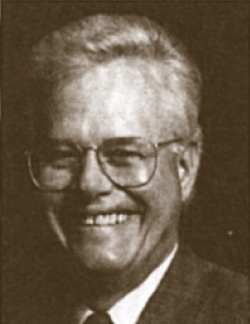
|
Robert E. Doll United Airlines His guiding inspiration for the formation and activities of the Airworthiness Assurance Task Force and his outstanding leadership as the first chairman of the AATF have had a profound positive effect on the airline industry, including major structural modification on most older types of aircraft in airline service and new approaches concerning structural fatigue and corrosion for those aircrafts. |
1992 |
|

|
William D. Reynard NASA Ames Research Center Under his dedicated leadership, NASA's Aviation Safety Reporting Systems (ASRS) team has created the world's largest database of operationally relevant human factors data. ASRS's safety publications reach an audience of 65,000 in over 80 nations. |
1993 |
|

|
Hideoaro Nagano Japan Airlines For fifty-five years of dedicated service to and promotion of civil aviation in Japan and throughout the world as a distinguished aviator, manager, teacher, mentor and ambassador for flight safety and his tireless promotion of human factors research. |
1994 |
|

|
Capt. H. Ray Lahr, ret. Untied Airlines For dedicated efforts to improve flight safety as an inventor, investigator and researcher which led to a collaborative effort resulting in a pocket-size navigation computer and particularly for his in-flight passenger injury research issuing in a regulatory requirement in 1981 for a "fasten seat belt while seated" sign to be affixed to each passenger seat back. |

|
John H. Enders FSF, Honorary Recipient Through a forty year career as an engineer, test pilot, research manager and aviation safety advocate, Jack Enders is known the world around for his copious contributions to the cause of flight safety. |
1995 |
|

|
C.O. Miller, ret. NTSB As an innovator, advocate and author, he has relentlessly pursued the application of a systems safety approach to accident and incident prevention which has received worldwide recognition. |
1996 |
|

|
Captain Robert G. Buley Northwest Airlines For leadership in an effort mandated by Congress to develop the design and operational standards for airborne collision avoidance systems and for leadership in helping to develop the FAA National Plan for Aviation Human Factors. |
1997 |
|

|
William G. Laynor, ret. NTSB His work helped identify the hazard of wind shear which led to collaborative efforts to develop more sophisticated wind shear detection and warning systems. Further, he successfully advocated ground based and airborne early warnings of collision threats. |
1998 |
|

|
Vice Admiral Brent M. Bennitt United States Navy For his contribution to air safety through vigorous support of a program of risk identification, analysis and countermeasures and for initiating a comprehensive review which resulted in a revised policy to upgrade naval aircraft with advanced safety equipment leading to a significant reduction in accidents and fatalities. |
1999 |
|

|
Merritt M. Birky, Ph.D National Transportation Safety Board For advancement of the science of fire, explosions and the toxic effects of fire in aviation accidents and aerospace accidents; the development of related safety recommendations; and the training of accident investigators. |
2000 |
|

|
Captain Richard T. Slatter C Eng, FRAeS Consultant, International Civil Aviation Organization For outstanding contributions to the identification of factors involved in controlled flight into terrain (CFIT) and approach-and-landing accidents (ALAs) and to the development and implementation of methods to prevent CFIT and ALAs. |
2001 |
|

|
Joseph Andrew Wright ARFF Technical Services For leadership in developing and testing methods of suppressing aircraft cabin fires and improving airport emergency response capabilities. |
2002 |
|

|
Capt. Edmond L. Soliday, ret. United Airlines For successful efforts encouraging the development of Flight Operations Quality Assurance (FOQA) and other safety sharing programs which have helped lessen hazards in the airspace system. |
2003 |
|

|
Captain Robert L. Sumwalt Air Line Pilots Association, International US Airways For his voluntary contributions through research papers, airline safety programs, accident investigations and the promotion of company/union collaborations to positively influence safety. |
2004 |
|

|
Kay Yong, Ph. D. Chairman Aviation Safety Council, Taiwan, China For his key role in establishing the Aviation Safety Council (ASC) as a fully independent accident and indict investigation organization that is widely acknowledged as a model of its kind. |
2005 |
|

|
Capt. Ralph S. Johnson, ret. Flight Test Research, United Airlines For his development of equipment and procedures, including such key concepts as the stabilized approach and crew resource management that approach and crew resource management that have brought lasting improvements in aviation safety. |
2006 |
|
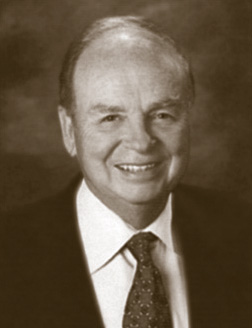
|
Don Bateman Honeywell For his many key contributions to aviation safety during his forty-eight years in the industry and, in particular, for his leadership in developing ground proximity warning system (GPWS) equipment and enhanced GPWS (also called terrain awareness and warning system, or (TAWS). GPWS and TAWS have been instrumental in reducing controlled flight into terrain (CFIT). |
2007 |
|
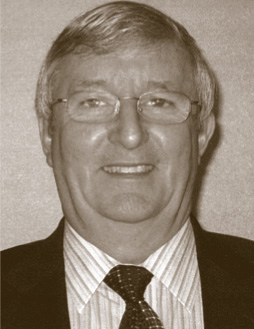
|
John R. Ackland Boeing Commercial Airplanes For his contributions to advanced technology for all weather operations, including required navigation performance and performance-based navigation, and to realistic airplane system safety assessments. |
2008 |
|

|
Captain Bertrand de Courville Air France For his distinguished management of safety programs at Air France and extensive activities in support of aviation safety internationally, his work on behalf of proactive safety awareness and analytical methods to increase the visibility of accident precursors, enables defenses in depth against human error. |
2009 |
|
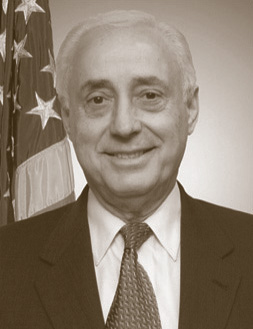
|
Nicholas A. Sabatini, ret. U.S. Federal Aviation Administration For his strategic vision, leadership and advocacy of sharing aviation safety data and resources. Nicholas A. Sabatini propelled both the FAA and the aviation industry to build strong safety cultures, quality management systems and safety management systems. He emphatically promoted risk management and prioritizing safety interventions. |
2010 |
|
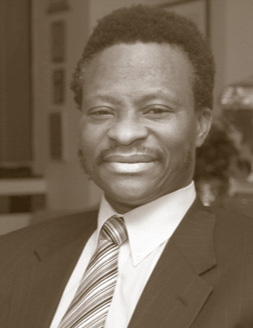
|
Dr. Harold O. Demuren Nigerian Civil Aviation Authority For outstanding leadership as Director General of the Nigerian Civil Aviation Authority and his commitment to raising aviation safety standards in Africa. |
2011 |
|
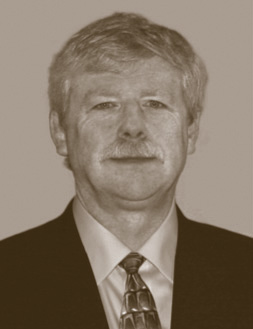
|
Captain John M. Cox, ret. President, Safety Operating Systems For extensive contributions to line operations safety, with particular emphasis on recovery from Loss of Control (LOC) and mitigation of the dangers of smoke, fire and fumes. |
2012 |
|

|
Robert "Bob" Sheffield International Helicopter Safety Team For outstanding leadership as a Founder and Executive Committee member of the International Helicopter Safety Team (IHST), and for years of committed aviation safety leadership globally across the oil and gas industry, particularly helicopter safety, and for inspiring operators and regulators to work together to achieve an 80% reduction in helicopter accident rates by 2016. |
2013 |
|

|
Key Dismukes Chief Scientist in the Human Systems Integration Division of NASA’s Ames Research Center For his leadership and vision spanning more than three decades of research dedicated to understanding and addressing human error in aviation, resulting in an overhaul of normal procedures in airline operations and substantial improvements in aviation safety.> |
2014 |
|
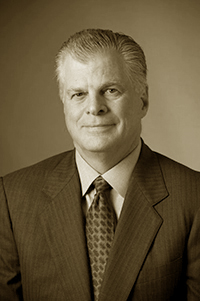
|
Bill Chiles For extraordinary, inspirational leadership, personal commitment and vision in creating Bristow’s highly successful TARGET ZERO culture of safety, and for sharing his best practices with the entire offshore helicopter industry, resulting in substantial and permanent improvements in aviation safety. |
2015 |
|
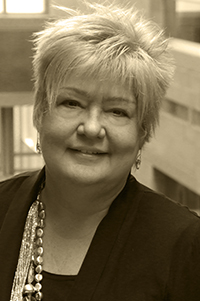
|
Nancy Graham ICAO For passionate leadership of ICAO's Air Navigation Bureau. For spearheading GASP, GANP and ASBU's developments. And for her unwavering commitment to unite industry and international organizations to enhance air safety through the fully transparent sharing of information. |
2016 |
|

|
Ken Smart For his distinguished and tangible contributions to aviation safety at the United Kingdom Air Accidents Investigation Branch (AAIB) and British Airways, along with numerous contributions to professional bodies, charities and other organizations. |
2017 |
|

|
Peggy Gilligan In recognition of her lasting contribution as a founder and leader of CAST and ASIAS and in recognition of her selfless commitment to public service and aviation safety during her distinguished 36-year career with the Federal Aviation Administration. |
2018 |
|

|
Tay Tiang Guan For distinguished and significant contributions in his role as Deputy Director-General of the Civil Aviation Authority of Singapore (CAAS), and for persistently and successully spearheading data sharing efforts to enhance air safety across all of aviation. |
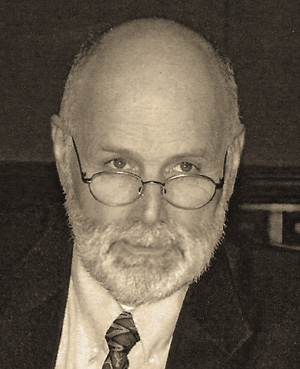
|

|
||
| Paul Russell | Jay Pardee | ||
| For lifelong dedication and groundbreaking work through the U.S. Commercial Aviation Safety Team and the Aviation Safety Information Analysis and Sharing Program and for leading us into the safest period in aviation history. | |||
2019 |
|
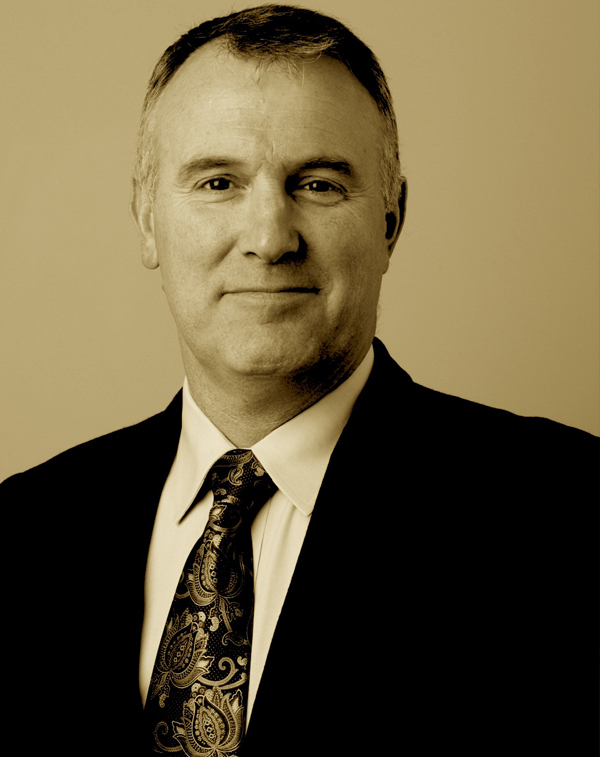
|
Cameron Ross For his foresight and leadership in spearheading the establishment of FSF’s Basic Aviation Risk Standard (BARS) program; for his ongoing stewardship of the program; and for his contributions to aviation safety in humanitarian relief and offshore helicopter operations. |
2020 |
|

|
The Honorable John J. Goglia For his strong and consistent voice and life-long passionate advocacy for safety in aviation and for unparalleled devotion to mentoring professional excellence of aircraft maintenance technicians. |
2021 |
|
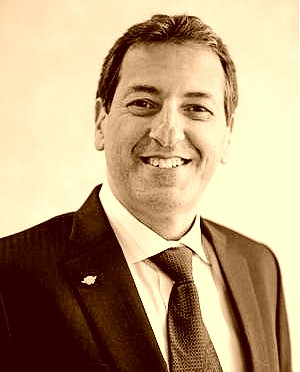
|
Henry Gourdji For significant contributions in improving aviation safety globally as a Senior Director at the International Civil Aviation Organization and for his extraordinary vision and leadership resulting in far fewer accidents and countless lives saved worldwide. |
2022 |
|
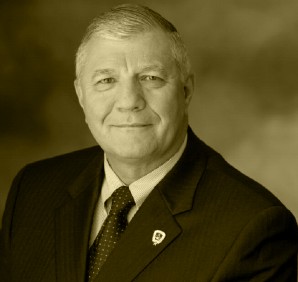
|
General Richard A. “Dick” Cody, US Army, Retired For his strong and determined leadership of the National Commission on Military Aviation Safety which produced actionable recommendations including permanent organizational changes to improve aviation safety across the Department of Defense. |
Honorary Recipient |
|
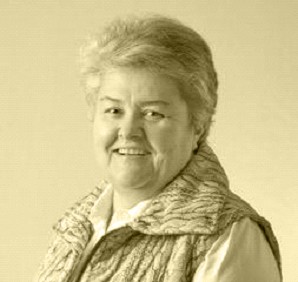
|
Pilar Vera Palmés For her extraordinary international humanitarian efforts in support of the victims of aviation accidents and their families over the last decade. |
2023 |
|

|
Tom Kok Director, AviAssist Foundation For his spirited leadership as the driving force behind the AviAssist Foundation for 25 years, resulting in major aviation safety improvements across the continent of Africa. |



